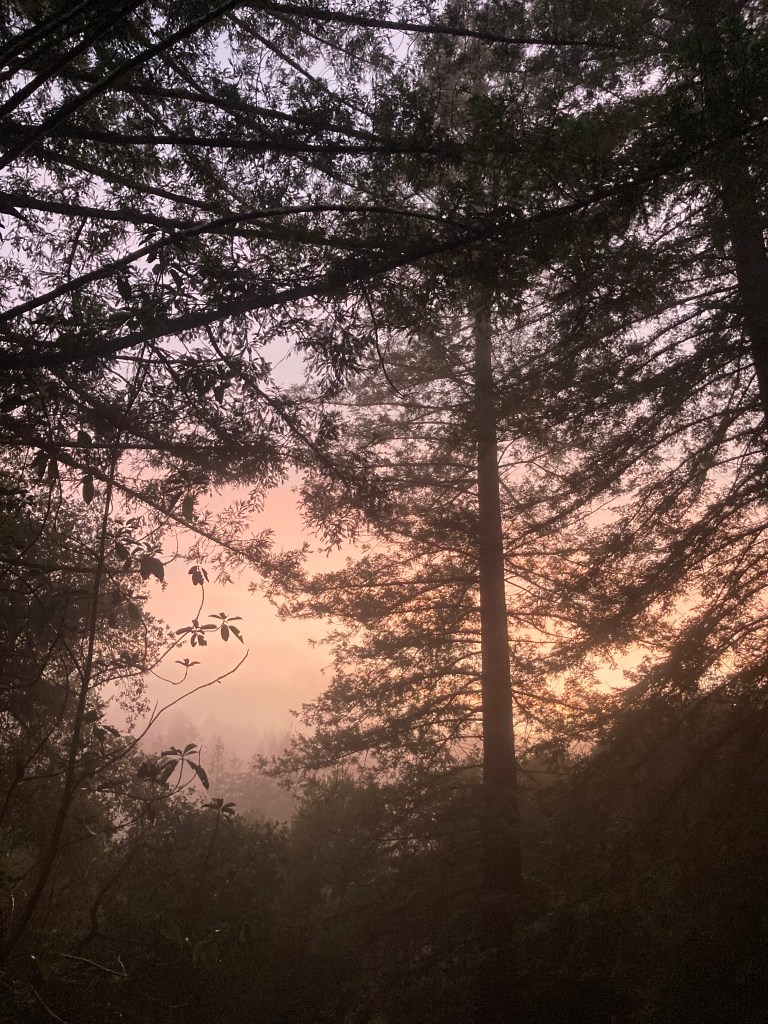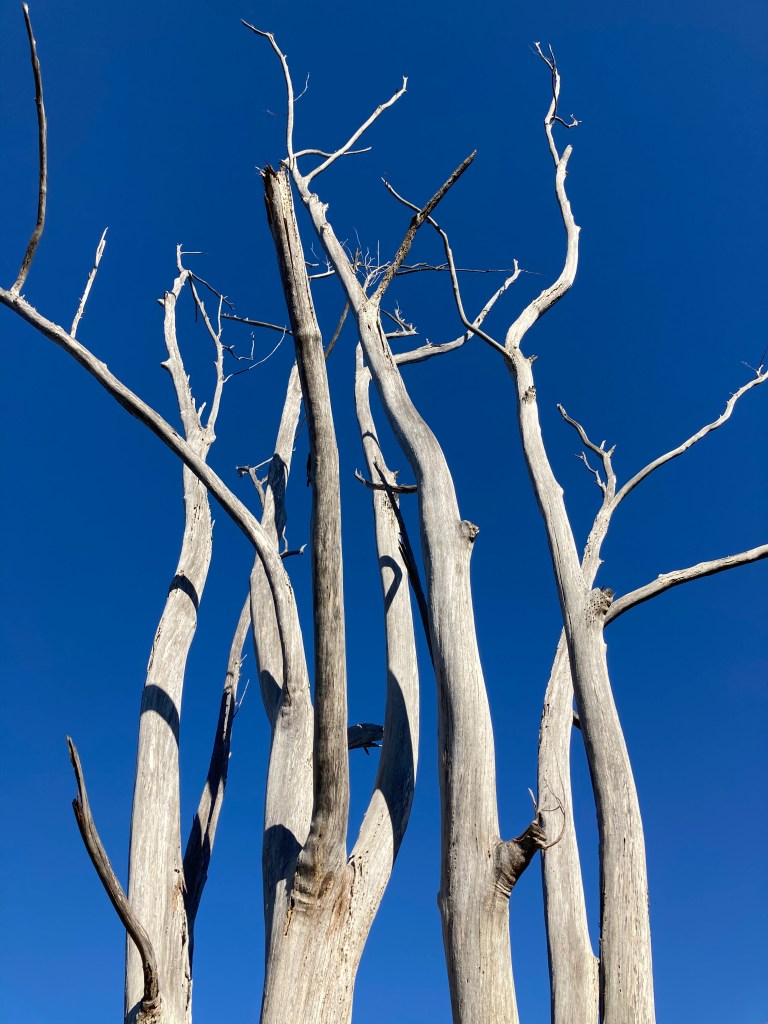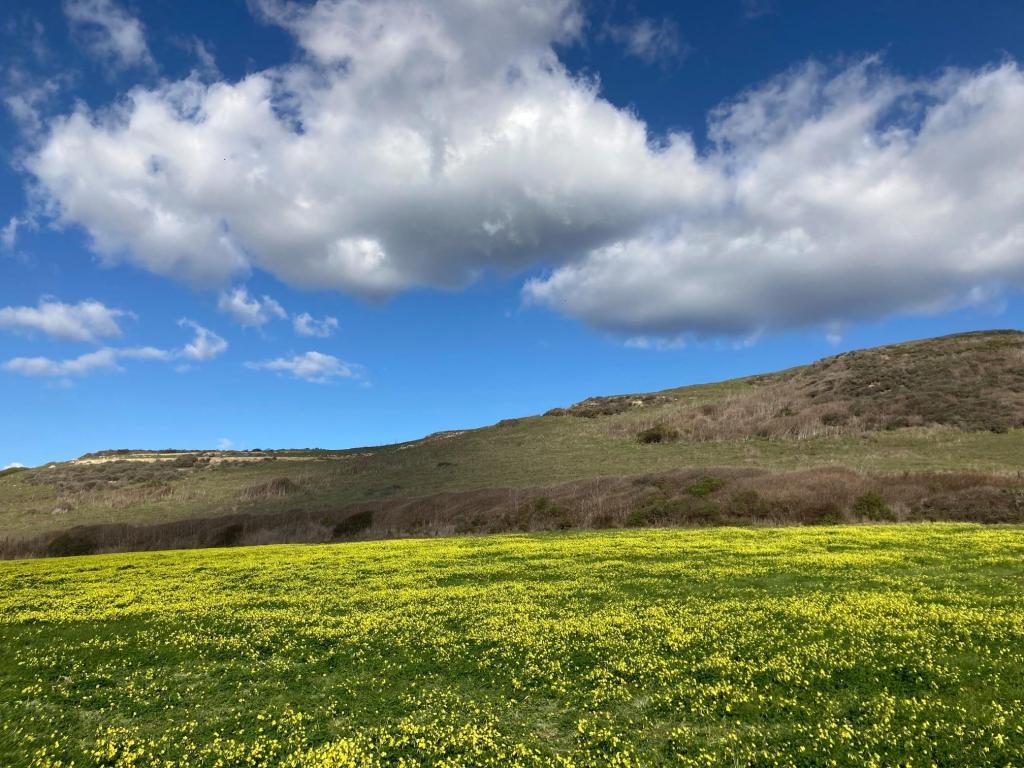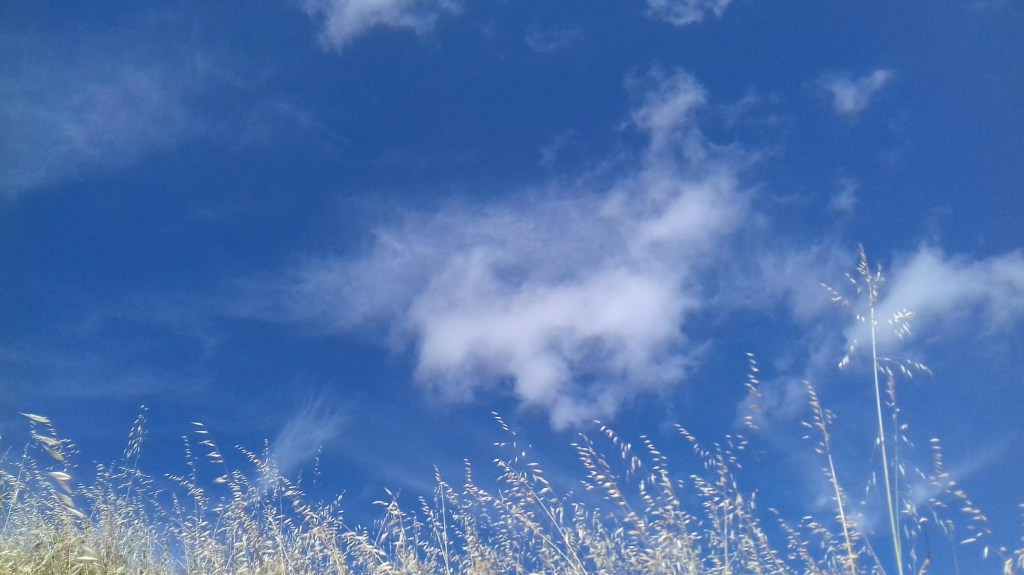 Some time back I remember listening to Naomi Shihab Nye talk about what it’s like writing a poem on Bill Moyer’s Language of Life series. Sometimes you set out to write your poem and you think you know where you’re going. “You think you’re going to church,” she explained, “but instead your poem takes you to the dog races.” When writing, you have your ideas, you practice writing, but you also don’t want to make a habit of forcing the work. It’s also a good idea to follow where the muse leads, and sometimes a more powerful piece of writing results. You want to pay attention to the inner voice that suggests, maybe this other thing is a better idea.
Some time back I remember listening to Naomi Shihab Nye talk about what it’s like writing a poem on Bill Moyer’s Language of Life series. Sometimes you set out to write your poem and you think you know where you’re going. “You think you’re going to church,” she explained, “but instead your poem takes you to the dog races.” When writing, you have your ideas, you practice writing, but you also don’t want to make a habit of forcing the work. It’s also a good idea to follow where the muse leads, and sometimes a more powerful piece of writing results. You want to pay attention to the inner voice that suggests, maybe this other thing is a better idea.
Recently, I’ve been noticing how many other kinds of situations in life arise that are similar Nye’s description of what happens when sit down to write. You go to work each day enjoying your job, for example–finding it interesting and productive, and then people come along with a different ideas–a whole new system, for instance, of how things should be done. Suddenly your plans, your way of seeing things, are altered. Or perhaps you are out exercising regularly, doing what you can to stay healthy, then you go to the doctors for your check up and discover you need a biopsy for what might be cancer. Another possibility is that you spent your life working at your job, being responsible and saving your money for your last years so that you can spend them enjoying your retirement, but then one of you has an accident and the other one spends his or her final years caring for the one who fell ill. The business you work at might unexpectedly be sold and you might suddenly find yourself out of a job. A different possibility might be that the person you’ve been married to for 20 or 30 years, had children with, the person whose life history you know and whose foibles you love and accept comes home one day and tells you, “I don’t think this marriage is going to last.” All these stories and more like them have happened to people I know. You think you’re on track, you know what you’re doing, but then something else happens and you’re heading for the dog races. What then?
There is an old Zen story about a farmer whose horse runs away. All the neighbors tell him, “Oh, such bad luck! That’s terrible.”
The farmer’s reply is, “Maybe. We’ll see.”
Next thing you know, the horse returns to the farmer’s land, and not only that, he brings seven more horses with him.
“Wow, that’s wonderful,” his friends and neighbors tell him. “Look at what you have now! You’re so very lucky.”
The farmer hears their words, and simply replies, “Maybe. We’ll see.”
Because the new horses were wild, they needed to be tamed, so the farmer’s son went out to tame them. In the process, he was thrown from one of the horses and broke his leg. “Why, that’s terrible,” the farmer’s friends and neighbors said as they gathered together in the evening over tea. “What bad luck you have again,” they said. “How are you going to get on now?”
The farmer just looked at them and said, “Who knows? We’ll see.”
A short time afterwards military officers arrived in the village looking for able-bodied young men they could find to fight in a war the government was involved in. They looked throughout the village for all those young men who were fit and conscripted them into the army. When they came by the farmer’s house, they saw that his son had a broken leg and couldn’t fight, so they passed him by.
Yet again, the neighbors gathered round the farmer to tell him, “How lucky you are! Your son doesn’t have to fight in the war.”
Once again, the farmer replied, “Maybe.”
As you can see, this story could go on at some length, event after event looking first good, then alternatively terrible. I think there comes a time in all of our lives when we are confronted first with things that look absolutely terrible. Maybe we will lose our sight, or the use of our limbs some day. Maybe we will get Alzheimer’s. Maybe we lose our house. Maybe the country we are living in is suddenly moves toward a situation of unrest, or a natural disaster occurs that is devastating. We develop our plans for our lives. We have our dreams, and we want things to go a certain way. What can we do to prepare ourselves for loss, for enormous change, or even just inevitable change? How can we be open, however, to the possibility that when our future or even our day takes to the dog races instead of to church, we will know what we need to hold on to, and what let go of?
Maybe you have heard of Sue Austin, a woman in a wheelchair goes diving. To hear her speak is inspiring, and to see the photos of her swimming underwater is truly beautiful. You can watch her TEDTalk, and you will see for yourself. Ms. Austin’s goal is to change the way we see a person in a wheelchair, and to show how a wheelchair can also liberate and open up new possibilities in a person’s life. As the tale with the farmer illustrates, what looks so terrible might not necessarily be as bad as it seems when put into a different context. Maybe the thing that looks like the worst thing that ever happened to us could become the thing that saves us, similar to how the farmer’s son didn’t have to go to war because of his broken leg.
On the other hand, it could be that what happens to us might be worse than we could ever imagine. Nevertheless, again, as the story illustrates, things always change, even the terrible things can change. It’s true that we could lose our jobs. It’s true we could lose our health. These kinds of difficult changes make me wonder: what am I doing with my life? Am I living the way I want to be living in order to be accountable for the gift of life that God has given me? What motivates me? What is calling to my spirit to follow it? Am I bold enough to pursue it? What would happen if I did?
There is a wisdom of the heart, and there is practical wisdom. What is the wise thing to do? What do you want to get to the end of your life and say you lived for. Henry David Thoreau went to live at Walden pond as an experiment in living simply, “I went to the woods because I wished to live deliberately, to front only the essential facts of life, and see if I could not learn what it had to teach, and not, when I came to die, discover that I had not lived.” I am thinking very seriously about his choice. How much of what I am doing is noise and clutter getting in the way of what life is really trying to tell me about? You hear or perhaps have seen or known people who have had what has been termed a mid-life crisis where they are asking themselves what they are really doing underneath all the actions and choices they have made thus far in their lives. What have they built with their lives, they wonder? Who am I? Maybe we need to be asking ourselves these question all along in our lives so that we can live more authentic lives throughout our lives and not have to come to the point of a crisis.
We want to live our lives from the center of who we are, and that means taking time all along to know who we are, to listen. This is why it’s valuable to take time each day to pause, to offer gratitude, to reflect. Richard Rohr in his CD Healing Our Violence Through the Journey of Centering Prayer says, “All great spirituality teaches about letting go of what you don’t need and who you are not. Then, when you can get little enough and naked enough and poor enough, you’ll find that the little place where you really are is ironically more than enough and is all that you need. At that place, you will have nothing to prove to anybody and nothing to protect.
That place is called freedom. It’s the freedom of the children of God. Such people can connect with everybody. They don’t feel the need to eliminate anybody . . .” In some way, most of us are afraid to let go of the security of our jobs, our houses, our hometowns–the things that have formed our identity. Rohr, in Everything Belongs: The Gift of Contemplative Prayer has an interesting insight, however, regarding those who leave the beaten path, those who begin their experiment in living to confront the essential facts of life in order to live intentionally. “The people who know God well—mystics, hermits, prayerful people, those who risk everything to find God—always meet a lover, not a dictator.” Is this true? Seamus Heaney’s final words to his wife were “Don’t be afraid,” and losing the one I most love is going to be the hardest, most fearful thing some day. ““The most common one-liner in the Bible is, “Do not be afraid.” Someone counted, and it occurs 365 times,” says Rohr in Falling Upward.
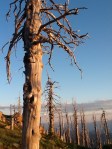 Things change. What we think we are standing on may move. At some point we are going to lose everything–we will lose our own life and the ones we love. But we don’t have to be afraid. How am I going to get to that space? I’m thinking hard these days about what I’ve held on to thinking that it will bring me happiness. But what is real? What are the essential facts of life, that if we learn them when we come to die, we will know we have lived? That is what I want to have the courage to live for.
Things change. What we think we are standing on may move. At some point we are going to lose everything–we will lose our own life and the ones we love. But we don’t have to be afraid. How am I going to get to that space? I’m thinking hard these days about what I’ve held on to thinking that it will bring me happiness. But what is real? What are the essential facts of life, that if we learn them when we come to die, we will know we have lived? That is what I want to have the courage to live for.














